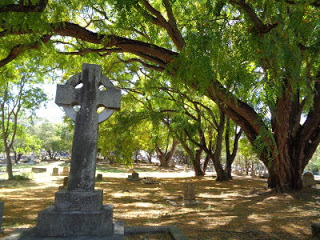THE MONUMENTS
The Monuments
South Brisbane Cemetery was established at the height of the Victorian-era fascination with monumental cemeteries. Middle-class families were expected to spend as much as they could afford on grave monuments appropriate to the social status of the deceased. The graves of paupers often went unmarked.
Many of these headstones are testament to the skills of the stonemasons who created them. Some early headstones have been lost to time, falling over because of storms or old age, but many of these fascinating monuments to our ancestors remain and effectively make the cemetery something of an open-air art gallery.
Explore the pages below to learn all about the monuments in South Brisbane Cemetery.
Headstone Symbolism
The headstones of South Brisbane Cemetery feature a huge array of different decorative carvings. Read here to find out what some of those symbols mean.
Anatomy of a Headstone
Can you identify various styles of headstones and their components? Learn about the different parts of headstones here.
The War Graves
South Brisbane Cemetery contains many official war graves, as well as many memorials on family graves to those killed overseas.
The Paddington Graves
The South Brisbane Cemetery opened in 1870 but some of the people interred there had died years earlier. Read here to find out why their graves are in the cemetery.
Different Cross Types
How many of these different types of cross can you find in the South Brisbane Cemetery?
The ‘Beautification Scheme’
The story behind the remarkable council programme of the 1970s that sought to remove thousands of monuments from municipal cemeteries.
The Executed Prisoners’ Plaque
Learn about a unique historical marker in the South Brisbane Cemetery on the graves of the people executed at Boggo Road prison during 1883-1913.
Cleaning Headstones
Some do’s and don’ts for cleaning graves and headstones at South Brisbane Cemetery and avoiding causing any damage.
Headstone Evolution
A look at how grave monument styles have changed in Queensland since the mid-19th century.












